Shingles gallery. Shingles Rash: Symptoms, Treatment, and Prevention – Comprehensive Guide
What does the shingles rash look like. How is shingles diagnosed and treated. Can shingles be prevented. What are the potential complications of shingles. Who is at risk for developing shingles.
Understanding Shingles: Causes and Risk Factors
Shingles, also known as herpes zoster, is a viral infection caused by the varicella-zoster virus – the same virus responsible for chickenpox. After a person recovers from chickenpox, the virus remains dormant in the body’s nerve tissues. Years or even decades later, it can reactivate, causing the painful rash characteristic of shingles.
Who is at risk for developing shingles? The risk increases significantly with age, particularly for those over 60. Other factors that can increase the likelihood of developing shingles include:
- Weakened immune system due to illnesses like cancer or HIV
- Certain cancer medications
- Long-term use of steroid medications
- Chronic stress or trauma
Is shingles a common condition? Approximately one in four adults will develop shingles at some point in their lives, with most cases occurring in otherwise healthy individuals.

Recognizing Shingles: Symptoms and Appearance
How does shingles manifest? The initial symptoms of shingles often appear 1-5 days before the characteristic rash develops. These early warning signs typically include:
- Itching
- Tingling
- Burning sensation
- Localized pain
What does the shingles rash look like? The shingles rash is distinctive and typically presents as:
- A cluster of fluid-filled blisters
- Often appearing in a band or strip on one side of the body
- Most commonly around the waist or on one side of the forehead/around one eye
- Can occur anywhere on the body
Are there other symptoms associated with shingles? In addition to the rash, individuals with shingles may experience:
- Fever
- Chills
- Headache
- Upset stomach
Diagnosing Shingles: When to Seek Medical Attention
How is shingles diagnosed? In most cases, a healthcare provider can diagnose shingles by visually examining the characteristic rash. However, it’s crucial to seek medical attention if you experience shingles symptoms, even if you don’t recall having had chickenpox. Many childhood cases of chickenpox are mild and may go unnoticed, but the virus can still remain dormant and reactivate later in life.

Why is early diagnosis important? Prompt diagnosis and treatment of shingles can help prevent complications and reduce the severity and duration of symptoms. If you suspect you have shingles, consult a healthcare provider as soon as possible.
Differentiating Shingles from Other Skin Conditions
How can you distinguish shingles from other skin conditions? While the shingles rash is often distinctive, it’s important to note that other conditions can cause similar symptoms:
- Cold sores: Small blisters that appear only on the lips or around the mouth, caused by the herpes simplex virus
- Poison ivy/oak/sumac: Itchy blisters that appear after outdoor activities, caused by contact with these plants
If you’re unsure about the cause of a rash, it’s best to consult a healthcare professional for an accurate diagnosis.
Treating Shingles: Medications and Home Remedies
What are the primary treatment options for shingles? While there is no cure for shingles, several treatments can help manage symptoms and speed up recovery:
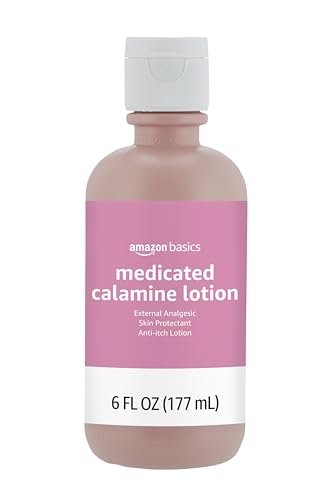
- Antiviral medications: Prescription drugs such as acyclovir (Zovirax), famciclovir (Famvir), or valacyclovir (Valtrex) can help shorten the duration and severity of a shingles outbreak.
- Pain relievers: Over-the-counter pain medications can help manage discomfort associated with shingles.
- Anti-itch lotions: Calamine lotion and other topical treatments can provide relief from itching.
When should treatment for shingles begin? For optimal results, antiviral treatment should be started as soon as possible after the first signs of shingles appear. This prompt intervention can significantly reduce the duration and intensity of the outbreak.
Home Remedies and Self-Care for Shingles
What can be done at home to manage shingles symptoms?
- Apply cool, wet compresses to the rash to reduce pain and itching
- Take cool baths or showers to soothe the skin
- Wear loose-fitting, natural fiber clothing to minimize irritation
- Get plenty of rest to support your immune system
- Manage stress through relaxation techniques or meditation
Preventing Shingles: Vaccination and Lifestyle Factors
Can shingles be prevented? While it’s not always possible to prevent shingles, there are steps you can take to reduce your risk:
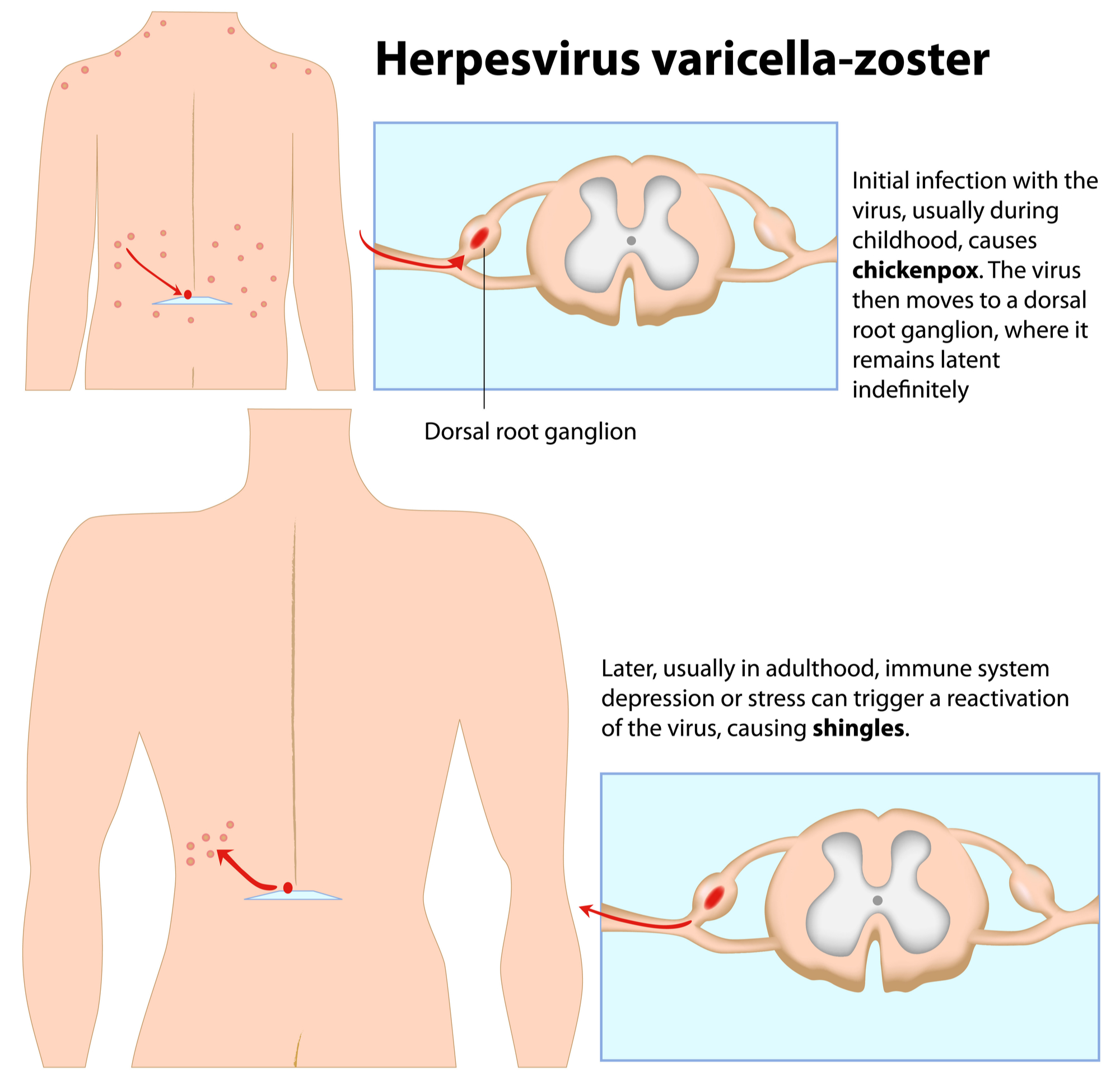
- Vaccination: The shingles vaccine is recommended for adults 50 and older. It can significantly reduce the risk of developing shingles and lessen the severity of symptoms if an outbreak does occur.
- Maintain a healthy lifestyle: A balanced diet, regular exercise, and adequate sleep can help support your immune system.
- Manage stress: Chronic stress can weaken the immune system, potentially increasing the risk of shingles reactivation.
Is the shingles vaccine effective for everyone? While the vaccine significantly reduces the risk of shingles, it’s not 100% effective. However, vaccinated individuals who do develop shingles typically experience milder symptoms and a lower risk of complications.
Complications of Shingles: Understanding the Risks
What are the potential complications of shingles? While many people recover from shingles without lasting effects, some may experience complications:
- Postherpetic neuralgia: Persistent pain in the affected area after the rash has healed
- Vision problems: If shingles affects the eye or surrounding area
- Hearing or balance issues: When the shingles virus impacts the ear
- Skin infections: Secondary bacterial infections of the rash
- Neurological complications: In rare cases, shingles can affect the brain or spinal cord
How common are shingles complications? The risk of complications increases with age and is higher in individuals with weakened immune systems. Prompt treatment can help reduce the likelihood and severity of complications.
:max_bytes(150000):strip_icc()/shingles-overview-1298876-final-96bee6f249ee483785573e08ea42ff4c-61e7481941754b4cbafaf20c90234094.png)
Postherpetic Neuralgia: A Common Complication
What is postherpetic neuralgia? This condition involves persistent pain in the area where the shingles rash occurred, even after the rash has healed. The pain can last for months or even years and may be severe enough to disrupt daily activities and quality of life.
Who is at risk for postherpetic neuralgia? The risk increases with age, with individuals over 50 being more susceptible. Early treatment of shingles can help reduce the risk of developing this complication.
Shingles and Contagion: Understanding Transmission Risks
Is shingles contagious? While shingles itself is not directly contagious, the virus that causes it can be transmitted to others under certain circumstances:
- Individuals with active shingles can potentially transmit the varicella-zoster virus to people who have never had chickenpox or the chickenpox vaccine.
- If exposed, these individuals may develop chickenpox, not shingles.
- The virus is transmitted through direct contact with the fluid from shingles blisters.
How can the spread of the virus be prevented? To minimize the risk of transmission:

- Keep shingles rashes covered
- Avoid contact with individuals who have never had chickenpox, especially infants and pregnant women
- Maintain good hand hygiene
- Avoid scratching or touching the rash
Living with Shingles: Coping Strategies and Support
How can individuals cope with the physical and emotional impact of shingles? Living with shingles can be challenging, but there are strategies to manage the condition:
- Follow your healthcare provider’s treatment plan closely
- Communicate openly with family and friends about your condition
- Join support groups to connect with others experiencing similar challenges
- Practice stress-reduction techniques like meditation or gentle yoga
- Maintain a healthy lifestyle to support your overall well-being
What resources are available for individuals with shingles? Many organizations offer information and support for people dealing with shingles:
- National Institutes of Health (NIH)
- Centers for Disease Control and Prevention (CDC)
- Shingles Support Society
- Local health departments and clinics
By understanding shingles, recognizing its symptoms, and seeking prompt treatment, individuals can better manage this condition and reduce the risk of complications. Remember, while shingles can be painful and disruptive, with proper care and support, most people recover fully and can return to their normal activities.
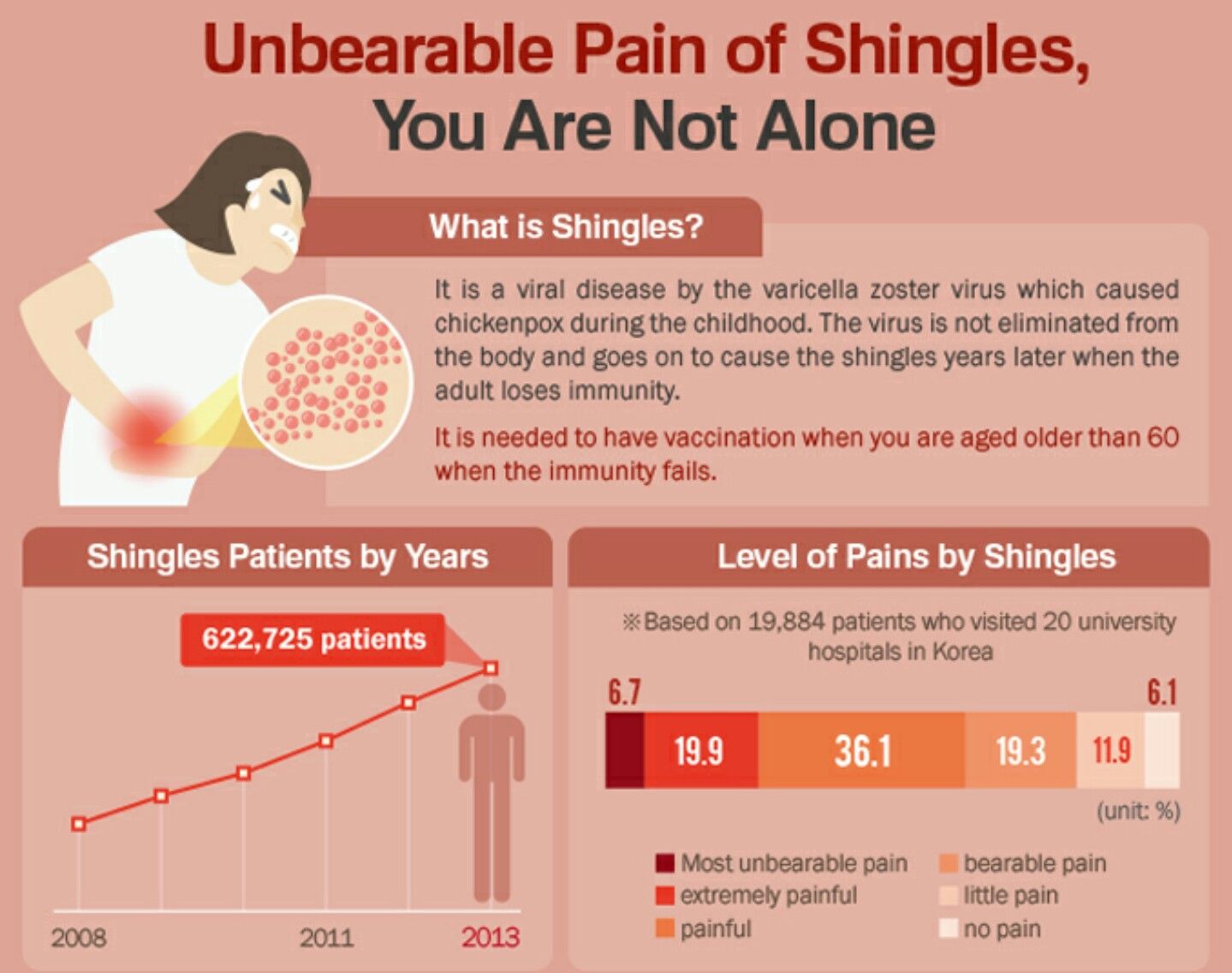
What the Shingles Rash Looks Like
Medically Reviewed by Carol DerSarkissian, MD on September 05, 2021
If you’ve ever had the chickenpox — and almost all adults have or have at least been exposed to it– there’s a good chance the virus is still at large in your body. The varicella zoster virus can lie dormant for decades without causing any symptoms. In some people, the virus wakes up and travels along nerve fibers to the skin. The result is a distinctive, painful rash called shingles.
The shingles rash can be a distinctive cluster of fluid-filled blisters — often in a band around one side of the waist. This explains the term “shingles,” which comes from the Latin word for belt. The next most common location is on one side of the forehead or around one eye. But shingles blisters can occur anywhere on the body.
The first symptoms of shingles appear one to five days before the rash. These early warning signs are usually felt in the location where the rash will develop:
- Itching
- Tingling
- Burning
- Pain
While the localized pain and rash are the tell-tale signs of shingles, other symptoms may include:
- Fever
- Chills
- Headache
- Upset stomach
Small blisters that appear only on the lips or around the mouth may be cold sores, sometimes called fever blisters. They’re not shingles, but are instead caused by the herpes simplex virus. Itchy blisters that appear after hiking, gardening, or spending time outdoors could be a reaction to poison ivy, oak, or sumac. If you aren’t sure what’s causing your rash, see your healthcare provider.
They’re not shingles, but are instead caused by the herpes simplex virus. Itchy blisters that appear after hiking, gardening, or spending time outdoors could be a reaction to poison ivy, oak, or sumac. If you aren’t sure what’s causing your rash, see your healthcare provider.
The varicella zoster virus is the culprit behind both chickenpox and shingles. The first time someone is exposed to the virus, it causes the widespread, itchy sores known as chickenpox. The virus never goes away. Instead, it settles in nerve cells and may reactivate years later, causing shingles. It’s also called herpes zoster, but it’s not related to the virus that causes genital herpes.
A doctor can usually diagnose shingles just by looking at the rash. If you have shingles symptoms, see your healthcare provider even if you think you’ve never had chickenpox. Many childhood cases of chickenpox are mild enough to go unnoticed, but the virus can still linger and reactivate. To help prevent complications, it’s important to start treatment as soon as possible after the shingles rash appears.
Shingles blisters usually scab over in 7-10 days and disappear completely in two to four weeks. In most healthy people, the blisters leave no scars, and the pain and itching go away after a few weeks or months. But people with weakened immune systems may develop shingles blisters that do not heal in a timely manner.
Anyone who has ever had chickenpox can get shingles, but the risk increases with age. People older than age 60 are up to 10 times more likely to get shingles than younger people. Other factors that increase your risk include:
- Some cancer medicines
- Steroid medicines
- Long-term stress or trauma
- A weak immune system from illnesses such as cancer or HIV
A quarter of adults will develop shingles at some point, and most are otherwise healthy.
Yes, but not in the way you may think. Your shingles rash will not trigger an outbreak of shingles in another person, but it can sometimes cause chickenpox in a child. People who’ve never had chickenpox, or the vaccine to prevent it, can pick up the virus by direct contact with the open sores of shingles. So keep a shingles rash covered and avoid contact with infants, as well as pregnant women who have never had chickenpox or the varicella vaccine and people who may have weak immune systems such as chemotherapy patients.
People who’ve never had chickenpox, or the vaccine to prevent it, can pick up the virus by direct contact with the open sores of shingles. So keep a shingles rash covered and avoid contact with infants, as well as pregnant women who have never had chickenpox or the varicella vaccine and people who may have weak immune systems such as chemotherapy patients.
In some people, the pain of shingles may linger for months or even years after the rash has healed. This pain, due to damaged nerves in and beneath the skin, is known as postherpetic neuralgia. Others feel a chronic itch in the area where the rash once was. In severe cases, the pain or itching may be bad enough to cause insomnia, weight loss, or depression.
If the shingles rash appears around the eye or forehead, it can cause eye infections and temporary or permanent loss of vision. If the shingles virus attacks the ear, people may develop hearing or balance problems. In rare cases, the shingles virus may attack the brain or spinal cord.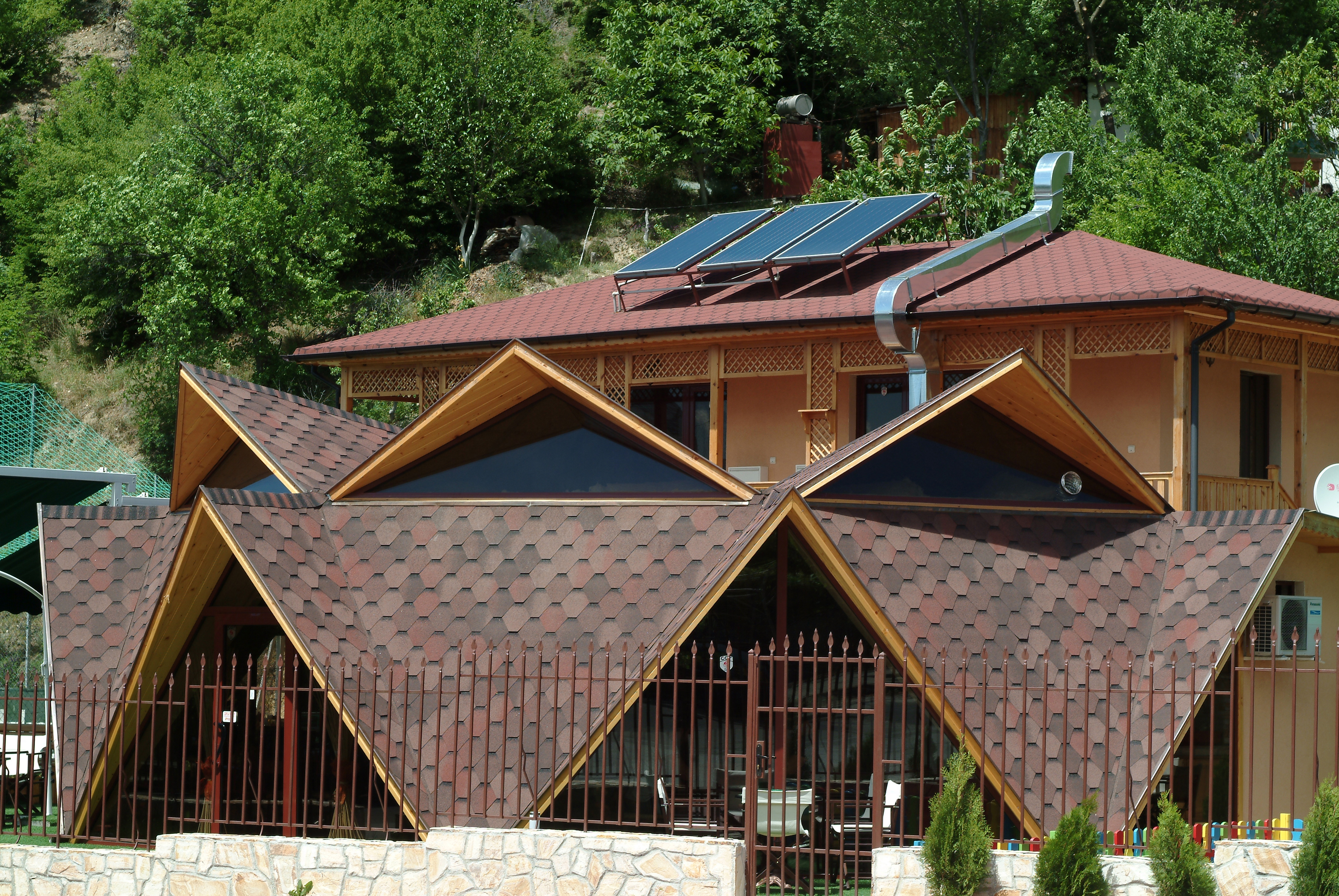 These complications can often be prevented by beginning treatment for shingles as soon as possible.
These complications can often be prevented by beginning treatment for shingles as soon as possible.
While there is no cure for shingles, antiviral medications can put the brakes on an attack. Prompt treatment can make a case of shingles shorter and milder. Doctors recommend starting prescription antiviral drugs at the first sign of a shingles rash. Options include acyclovir (Zovirax), famciclovir (Famvir), or valacyclovir (Valtrex).
Over-the-counter pain relievers and anti-itch lotions, such as calamine, can help relieve the pain and itching of the shingles rash. If the pain is severe or the rash is concentrated near an eye or ear, consult your doctor right away. Additional medications, such as corticosteroids, may be prescribed to reduce inflammation.
Colloidal oatmeal baths are an old standby for relieving the itch of chickenpox and can help with shingles, as well. To speed up the drying out of the blisters, try placing a cool, damp washcloth on the rash (but not when wearing calamine lotion or other creams. ) If your doctor gives you the green light, stay active while recovering from shingles. Gentle exercise or a favorite activity may help keep your mind off the discomfort.
) If your doctor gives you the green light, stay active while recovering from shingles. Gentle exercise or a favorite activity may help keep your mind off the discomfort.
The CDC recommends that healthy adults ages 50 and older get the shingles vaccine, Shingrix, which provides greater protection than Zostavax. The vaccine is given in two doses, 2 to 6 months apart. Zostavax is still in use for some people ages 60 and older.
Do not get the shingles vaccine if:
Since the late 1990s, most children in the U.S. have received the varicella vaccine to protect against chickenpox. This vaccine uses a weakened strain of the varicella zoster virus that is less likely to settle into the body for the long haul.
IMAGES PROVIDED BY:
(1) CNRI / Photo Researchers, Inc.
(2) Bart’s Medical Library / Phototake
(3) Steve Pomberg / WebMD
(4) Thinkstock
(5) Interactive Medical Media, LLC; Scott Camazine / Phototake; John Kaprielian / Photo Researchers
(6) Peggy Firth and Susan Gilbert for WebMD
(7) N. M. Hauprich / Photo Researchers, Inc
M. Hauprich / Photo Researchers, Inc
(8) N. M. Hauprich / Photo Researchers, Inc
(9) Hans Neleman / Stone
(10) Dr. P. Marazzi / Photo Researchers
(11) David Mack / Photo Researchers
(12) SPL / Photo Researchers, Inc.
(13) Steve Pomberg / WebMD
(14) Denis Felix / Stone
(15) Steve Pomberg / WebMD
(16) Getty Images
(17) Thinkstock
(18) Thinkstock
REFERENCES:
American Academy of Dermatology: “Lip and Mouth Care” and “Poison Ivy: Signs and Symptoms.”
Centers for Disease Control and Prevention: “Shingles: Signs & Symptoms;” “Shingles: Transmission;” “Shingles (Herpes Zoster): Prevention and Treatment;” “Shingles Vaccination: What You Need to Know;” “Shingrix Recommendations;” and “What Everybody Should Know about Zostavax.”
National Institute of Allergy and Infectious Diseases: “”Shingles Symptoms,” “Shingles Diagnosis,” “Shingles Treatment.”
National Institute of Neurological Disorders and Stroke: “Shingles: Hope Through Research. “
“
© 2021 WebMD, LLC. All rights reserved. View privacy policy and trust info
Shingles: Symptoms with Pictures
Early signs of shingles can include tingling and localized pain. You may also develop a blistering rash that can itch, burn, or hurt.
Shingles, also known as herpes zoster, occur when the dormant chickenpox virus, varicella zoster, is reactivated in your nerve tissue.
Typically, the shingles rash lasts 2 to 4 weeks, and most people make a complete recovery.
Doctors are often able to quickly diagnose shingles from the appearance of the skin rash.
Share on PinterestShingles rash, shown here on a darker skin tone, appears as tiny red blisters in a group or cluster.
Anukool Manoton/ShutterstockShare on PinterestA viral infection causes shingles and a painful rash (shown on a lighter skin tone).
Photography by DermNet New Zealand
Prior to the rash starting, you may develop a burning sensation, itchiness, or tingling on one side of the body, often on the trunk. You may also develop:
You may also develop:
- a headache
- sensitivity to light
- general fatigue
When the rash starts, you may notice pink or red blotchy patches on one side of your body. These patches cluster along nerve pathways. Some people report feeling shooting pain in the area of the rash.
During this initial stage, shingles is not contagious.
The rash quickly develops fluid-filled blisters like chickenpox. They may be accompanied by itching. New blisters continue to develop for several days. In most cases, according to the Centers for Disease Control and Prevention (CDC), blisters appear over a localized area, but widespread blistering is possible.
Blisters are most common on the torso and face, but they can occur elsewhere. In rare cases, the rash appears on the lower body. Some possibly may not develop a rash at all.
It’s not possible to transmit the shingles virus to someone. However, if you’ve never had chickenpox or the chickenpox (varicella) vaccine, it’s possible to get chickenpox from someone with shingles through direct contact with active blisters since the same virus causes both shingles and chickenpox.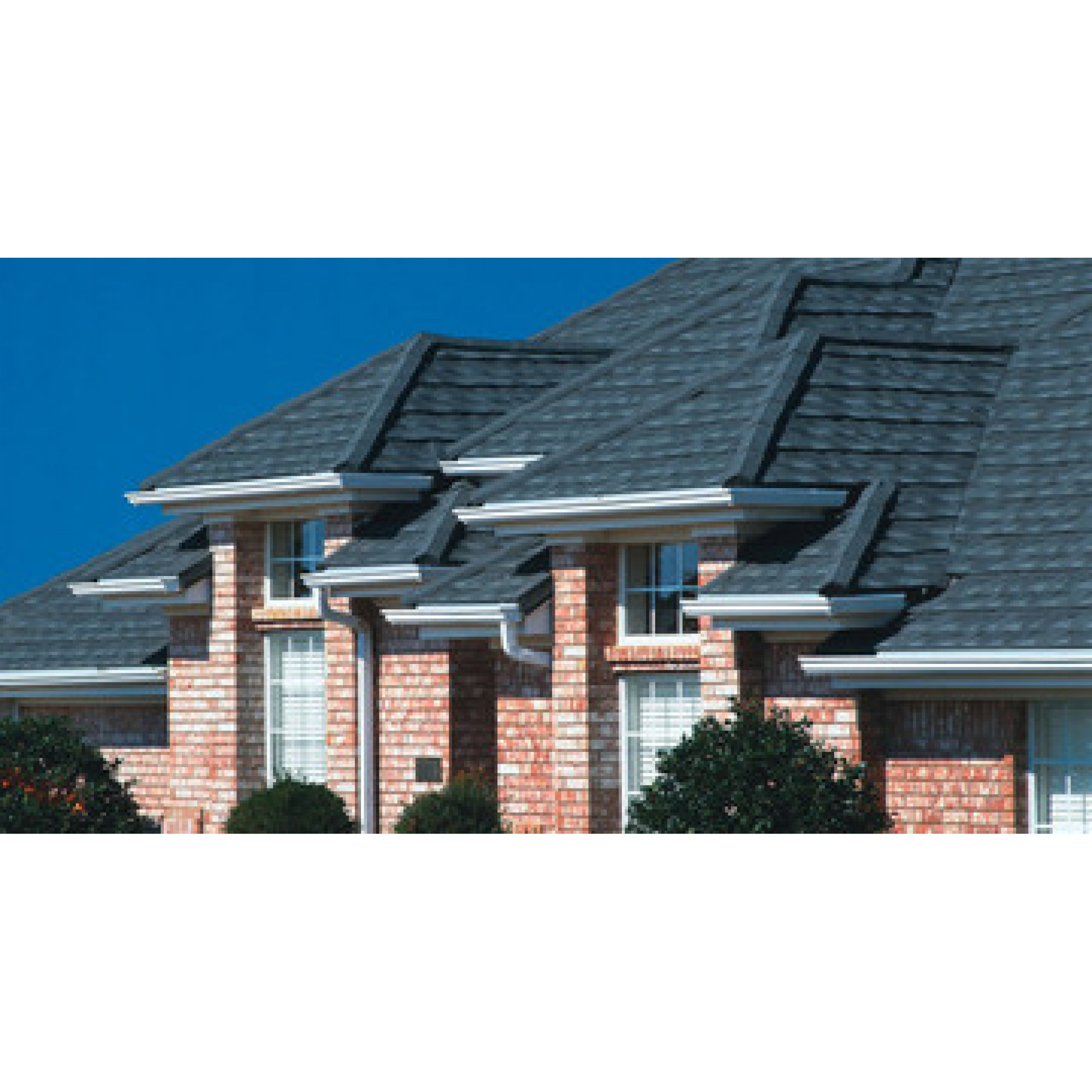
Once a rash starts, it’s important to consult with your doctor within 3 days, according to the American Academy of Dermatology (AAD). In the first 3 days, they can prescribe an antiviral, which can help speed up recovery and reduce symptom severity.
Share on PinterestAs shingles heals, the rash will start to scab over (shown on a darker skin tone).
abdmalekmd/Getty Images
Share on PinterestIn most cases, shingles rash leaves no scars and fully heals (shown on a lighter skin tone).
helovi/Getty Images
Blisters sometimes erupt and ooze. They may then turn slightly yellow and begin to flatten. As they dry out, scabs form. Each blister can take 7 to 10 days to crust over, per the National Institute on Aging.
During this stage, your pain may ease a little, but it can continue for months, or in some cases, years.
Once all blisters have completely crusted over, there is a low risk of transmitting the virus.
Shingles often appears around the rib cage or waist, and may look like a “belt” or “half belt.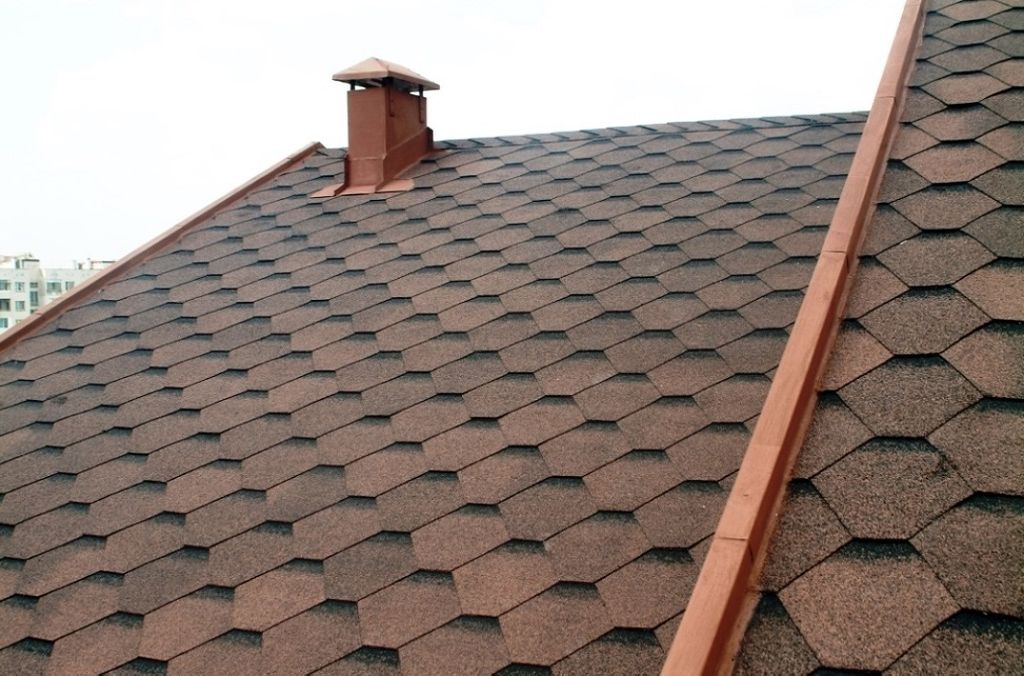 ” You might also hear this formation referred to as a “shingles band” or a “shingles girdle.”
” You might also hear this formation referred to as a “shingles band” or a “shingles girdle.”
This classic presentation is easily recognizable as shingles. The belt can cover a wide area on one side of your midsection. Its location can make tight clothing particularly uncomfortable.
Share on PinterestIn some cases, shingles rash can present near the eye. This is known as ophthalmic shingles.
VideoBCN/Shutterstock
Ophthalmic shingles, also known as herpes zoster ophthalmicus, occurs around the eye. Often, it starts out as a burning or tingling sensation on the scalp, cheeks, or forehead.
Like when shingles appears on other areas of the body, the tingling sensation can turn into an itchy, painful rash on the scalp, forehead, or cheeks.
If shingles affects the eyes, it can cause symptoms such as redness and swelling of the eye, inflammation of your cornea or iris, and drooping eyelid. Ophthalmic shingles can also cause:
- mild to severe vision loss
- discharge from the eye
- feeling that a foreign body is in the eye
- light sensitivity
According to the CDC, though less common, people who develop shingles may develop a rash that crosses multiple dermatomes. Dermatomes are separate skin areas that are supplied by separate spinal nerves.
Dermatomes are separate skin areas that are supplied by separate spinal nerves.
When the rash affects three or more dermatomes, it is called “disseminated or widespread zoster.” In these cases, the rash may look more like chickenpox than shingles. You are more likely to develop widespread shingles if you have a weakened immune system.
A secondary bacterial infection is a possible complication of shingles.
Open sores of any kind are always susceptible to bacterial infection. To lower the possibility of a secondary infection, keep the area clean and avoid scratching.
Severe infection can lead to permanent scarring of the skin. Report any sign of infection to your doctor immediately. Early treatment can help prevent it from spreading. People with weakened immune systems have a higher chance of developing infections or other complications.
Most people can expect the rash to heal within 2 to 4 weeks. Although some people may be left with minor scars, most will make a complete recovery with no visible scarring.
In some cases, pain along the site of the rash can continue for several months or longer. This is known as postherpetic neuralgia.
You may have heard that once you get shingles, you can’t get it again. However, the CDC cautions that shingles can return multiple times in some people.
The varicella-zoster virus causes shingles to occur. If you had chickenpox as a child or got the chickenpox vaccine, you can develop shingles at some point within your life. However, you have a lower risk of developing shingles if you had the vaccine.
The exact reason why the virus resurfaces is still not fully understood. However, as you age and your defense against the virus decreases, you may become more susceptible. The risk of developing shingles and complications increases drastically at 50 years old.
According to the CDC, about 1 in 3 adults will develop shingles at least once in their lifetime. Several factors, including age, can increase your risk of developing shingles at least once in your lifetime.
Possible risk factors include:
- being age 50 years or older
- living with human immunodeficiency virus (HIV)
- being a bone marrow or solid organ transplant recipient
- taking immunosuppressive medications, such as chemotherapy, steroids, or those related to transplants
- living with cancer, particularly leukemia and lymphoma
The CDC notes that other factors may play a part in who develops shingles, but more research is needed to further explain, better understand, and confirm these factors. According to research:
- There’s a higher prevalence of shingles diagnoses in white people compared with Black people.
- People who are assigned female at birth may be more likely to develop shingles than people who are assigned male at birth.
Most doctors can visually examine and diagnose shingles based on the rash and other symptoms. In most cases, the rash:
- appears a few days after other symptoms, such as tingling sensation, start
- develops only on one side of the body
- often occurs around the trunk
- appears only in one or two areas
- develops a blistering effect that lasts about 2 to 4 weeks
Shingles rash vs.
 herpes
herpes
Share on PinterestCold sores are caused by HSV-1 (shown on a darker skin tone).
BonNontawat/Shutterstock
Share on PinterestHSV-1 spreads by close contact, commonly through kissing (shown on a lighter skin tone).
simarik/Getty Images
Shingles, also known as herpes zoster, is in the same viral family as herpes simplex. At first, it may be difficult to tell the two conditions apart because they both cause blistering rashes.
However, shingles, unlike herpes, typically does not cross the body’s midline and often appears on the trunk. Herpes often appears around the genitals or in the mouth. In both cases, a person may not develop a rash at all or may develop other symptoms that can help a doctor distinguish between the two conditions.
A person should talk with their doctor if they’re not sure which virus may be causing the rash.
For more information on herpes versus shingles rash, click here.
Shingles rash vs. poison ivy
Share on PinterestPoison ivy rash will appear red and inflamed and can be painful (shown on a darker skin tone).
Photo by DermNet New Zealand
Share on PinterestPoison ivy exposure can cause a quick-forming rash on the exposed areas (shown on a lighter skin tone).
Abm6868, CC BY-SA 4.0, via Wikimedia Commons
Poison ivy, oak, or sumac can cause an allergic reaction that results in a painful, itchy rash. When the rash appears, it often appears as a straight line.
One way to distinguish between the two conditions is that poison ivy often appears on exposed areas of skin and on both sides of the body.
You can learn more about the difference between shingles and poison ivy rash here.
Flexible multi-layer tile SHINGLAS JAZZ
About company
Story
News
Jobs
Contacts
8 (800) 333-86-24
Call within Russia is free
Description
Features
Documents
For those who follow current trends and actively follow them in everyday life.
Manufacturer’s warranty – 50 years.
Specifications:
Parameter name: | Jazz Collection |
Number of tile layers, pcs | 2 |
Width, mm | 1000±5.0 |
Height, mm | 335±3.0 |
Thickness, mm | 3.0±0.2* |
Number of shingles in a package, pcs | 14 |
Weight 1 sq.m. roofing, kg | 13.50 |
Quantity of roofing in a package, sq.m. | 2.00 |
Packing weight, kg | 27. |
Base, fiberglass, g/m2 | 90 |
| Bitumen | oxidized |
| topping | basalt |
Heat resistance, °С, not lower | 110 |
Loss of dressing, g/sample, no more | 1.2 |
Number of packages on a pallet, pcs | 42 |
| Warranty, years | 50 |
* thickness of one layer of tiles
Certificate_sootvetstviya.pdf
Size: 510.43 KbGarantiya.
 pdf
pdf
Size: 454.89 KbTekhlist.pdf
Size: 366.69 KbInstruction_Shinglas_Montage_2019.pdf
Size: 2.12 Mb
Buying
with this product
Gallery – GK Etalon
In our company you can get qualified advice from specialists on all types of roofing and facade materials, both sold by us and existing on the market.
Installation is carried out by highly qualified specialists
Installation of metal tiles
Feroof composite tile roof (Moscow region, K. P. European Valley)
P. European Valley)
Roof made of elite metal tiles Grand Line (Moscow region, Zh.K. Polesye)
Ruukki metal tile roofing (Moscow region, K.P. Evropeyskaya Dolina 2)
Date: 07.05.2013
Address: K.P. Bristol
Completed works: installation of Interprofil metal tiles and Velux roof windows
Date: 05.05.2013
Address: K.P. Losiny park-2
Completed works: dismantling of the old roof, installation of metal tiles Interprofil
Date: 08/11/2012
Address: K.P. Domodedovo town
Completed works: installation of metal tiles and accessories Interprofil
Date: 07/09/2012
Address: K.P. Saburovo Park
Completed works: dismantling of the old roof, installation of metal tiles and accessories Interprofil
Date: 06/23/2012
Address: Zh. K. Polissya
K. Polissya
Completed works: roof installation with metal tiles and accessories Interprofil
Date: May 10, 2012
Address: K.P. Povadino
Completed works: installation of a roof made of Interprofil metal tiles and window systems
Date: 05.11.2012
Address: Zh.K. Polissya
Completed works: dismantling of the old roof, installation of Optima
metal tiles
Date: 09/24/2012
Address: K.P. Zelenogradsky
Completed works: installation of roofs made of Optima metal tiles and roof windows Fakro
Date: 07/03/2012
Address: K.P. Domodedovo Town
Completed works: installation of Optima metal roof and accessories
Date: 07/14/2012
Address: Zh.K. Polissya
Completed works: dismantling of the old roof, installation of metal tiles Pelti Ja Rauta
Date: 06/30/2012
Address: K. P. Losiny Ostrov
P. Losiny Ostrov
Completed works: installation of a roof made of Pelti Ja Rauta metal tiles and accessories
Date: 06/29/2012
Address: K.P. Akademia Park
Completed works: installation of Pelti Ja Rauta metal tiles, cladding with Varitek siding
Date: 07/11/2012
Address: K.P. Losiny Park-2
Completed work: installation of a roof made of Prisma metal tiles and window systems
Date: 06/01/2012
Address: K.P. Zelenogradsky
Completed works: installation of a roof made of Prisma metal tiles and roof windows Velux
Date: 09/02/2011
Address: K.P. Losiny Ostrov
Completed works: dismantling of the old roof, installation of Prisma metal tiles and Grand Line gutter system
Date: 06/26/2012
Address: K.P. Moose Island
Completed works: dismantling of the old roof, installation of Ruukki metal tiles, covering with Varitek siding
Date: 03. 06.2012
06.2012
Address: K.P. Evropeyskaya Dolina 2
Completed works: installation of Ruukki metal tiles and water drainage system Aquasystem
Date: 13.03.2012
Address: Zh.K. Polissya
Completed work: dismantling of the old roof and installation of Ruukki metal tiles
Date: 09/03/2011
Address: Zh.K. Polissya
Completed works: installation of Ruukki metal tiles and Velux roof windows
Date: 07/18/2011
Address: K.P. Losiny Ostrov
Completed works: dismantling of the old roof and installation of Ruukki metal tiles
Date: 07/09/2012
Address: K.P. Moose Island
Completed works: metal roof installation MetalProfile
Top
Composite roof tile installation
Date: 05/06/2012
Address: K.P. Mechtaevo
Completed works: installation of Decra tiles and Fakro roof windows
Date: 06/26/2012
Address: K. P. Sokolovo
P. Sokolovo
Completed work: installation of Decra tiles and roof windows Velux
Date: 08/16/2012
Address: K.P. Domodedovo Town
Completed works: dismantling of the old roof, installation of Decra tiles and Fakro skylights
Date: 06/03/2012
Address: K.P. Povadino
Completed works: dismantling of the old roof, installation of Decra tiles and gutter system
Date: 11/17/2011
Address: K.P. Zelenogradsky
Completed work: installation of a roof made of Decra tiles, skylights and a drainage system
Date: 08/04/2012
Address: K.P. European Valley
Completed works: dismantling of the old roof, installation of tiles Feroof
Date: 06/26/2011
Address: K.P. Zelenogradsky
Completed work: installation of a roof made of composite tiles Feroof
Date: 06/17/2012
Address: K. P. Elk Park -2
P. Elk Park -2
Completed work: installation of a roof made of Gerard composite tiles and gutter system
Date: 10/07/2011
Address: K.P. Akademia Park
Completed works: dismantling of the old roof, installation of Gerard tiles and window systems
Date: May 10, 2012
Address: K.P. Bristol
Work performed: installation of Gerard composite roof tiles and window systems
Date: 12/11/2012
Address: K.P. Losiny Ostrov
Completed works: installation of a roof made of MetroBond tiles, window and gutter systems
Date: 07/31/2012
Address: K.P. Povadino
Completed works: dismantling of the old roof, installation of Metrotile tiles and window systems
Date: May 24, 2012
Address: K.P. Losiny Ostrov
Completed works: installation of a roof made of MetroBond tiles and Velux roof windows
Date: 09/15/2011
Address: K.

 00
00 pdf
pdf